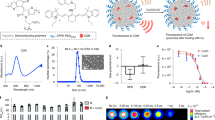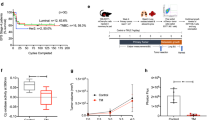Abstract
Owing to its cytotoxicity, free copper is chelated by protein side chains and does not exist in vivo. Several chaperones transport copper to various cell compartments, but none have been identified that traffic copper to the nucleus. Copper-64 decays by β + and β − emission, allowing positron emission tomography and targeted radionuclide therapy for cancer. Because the delivery of 64Cu to the cell nucleus may enhance the therapeutic effect of copper radiopharmaceuticals, elucidation of the pathway(s) involved in transporting copper to the tumor cell nucleus is important for optimizing treatment. We identified Atox1 as one of the proteins that binds copper in the nucleus. Mouse embryonic fibroblast cells, positive and negative for Atox1, were used to determine the role of Atox1 in 64Cu transport to the nucleus. Mouse embryonic fibroblast Atox1+/+ cells accumulated more 64Cu in the nucleus than did Atox1−/− cells. HCT 116 colorectal cancer cells expressing p53 (+/+) and not expressing p53 (−/−) were used to evaluate the role of this tumor suppressor protein in 64Cu transport. In cells treated with cisplatin, the uptake of 64Cu in the nucleus of HCT 116 p53+/+ cells was greater than that in HCT 116 p53−/− cells. Atox1 expression increased in HCT 116 p53+/+ and p53−/− cells treated with cisplatin; however, Atox1 localized to the nuclei of p53+/+ cells more than in the p53−/− cells. The data presented here indicate that Atox1 is involved in copper transport to the nucleus, and cisplatin affects nuclear transport of 64Cu in HCT 116 cells by upregulating the expression and the nuclear localization of Atox1.







Similar content being viewed by others
Abbreviations
- BSA:
-
Bovine serum albumin
- Ctr1:
-
Copper transporter 1
- HPLC:
-
High-performance liquid chromatography
- mAb:
-
Monoclonal antibody
- MEF:
-
Mouse embryonic fibroblast
- PBS:
-
Phosphate-buffered saline
- PET:
-
Positron emission tomography
- siRNA:
-
Small interfering RNA
References
Puig S, Thiele DJ (2002) Curr Opin Chem Biol 6:171–180
Rae TD, Schmidt PJ, Pufahl RA, Culotta VC, O’Halloran TV (1999) Science 284:805–808
Anderson CJ, Ferdani R (2009) Cancer Biother Radiopharm 24:379–393. doi:10.1089/cbr.2009.0674
Lewis MR, Wang M, Axworthy DB, Theodore LJ, Mallet RW, Fritzberg AR, Welch MJ, Anderson CJ (2003) J Nucl Med 44:1284–1292
Anderson CJ, Pajeau TS, Edwards WB, Sherman EL, Rogers BE, Welch MJ (1995) J Nucl Med 36:2315–2325
Connett JM, Anderson CJ, Guo LW, Schwarz SW, Zinn KR, Rogers BE, Siegel BA, Philpott GW, Welch MJ (1996) Proc Natl Acad Sci USA 93:6814–6818
Wang M, Caruano AL, Lewis MR, Meyer LA, VanderWaal RP, Anderson CJ (2003) Cancer Res 63:6864–6869
George AM, Sabovljev SA, Hart LE, Cramp WA, Harris G, Hornsey S (1987) Br J Cancer Suppl 8:141–144
Chiu SM, Xue LY, Friedman LR, Oleinick NL (1992) Radiat Res 129:184–191
Chiu SM, Xue LY, Friedman LR, Oleinick NL (1993) Biochemistry 32:6214–6219
Abada P, Howell SB (2010) Met Based Drugs 2010:317581. doi:10.1155/2010/317581
Robinson NJ, Winge DR (2010) Annu Rev Biochem 79:537–562. doi:10.1146/annurev-biochem-030409-143539
Prohaska JR, Gybina AA (2004) J Nutr 134:1003–1006
Howell SB, Safaei R, Larson CA, Sailor MJ (2010) Mol Pharmacol 77:887–894. doi:10.1124/mol.109.063172
Palm ME, Weise CF, Lundin C, Wingsle G, Nygren Y, Bjorn E, Naredi P, Wolf-Watz M, Wittung-Stafshede P (2011) Proc Natl Acad Sci USA 108:6951–6956. doi:10.1073/pnas.1012899108
Boal AK, Rosenzweig AC (2009) J Am Chem Soc 131:14196–14197. doi:10.1021/ja906363t
Rabik CA, Dolan ME (2007) Cancer Treat Rev 33:9–23. doi:10.1016/j.ctrv.2006.09.006
Fuertes MA, Alonso C, Perez JM (2003) Chem Rev 103:645–662. doi:10.1021/cr020010d
Bragado P, Armesilla A, Silva A, Porras A (2007) Apoptosis 12:1733–1742. doi:10.1007/s10495-007-0082-8
Eiblmaier M, Meyer LA, Anderson CJ (2008) Cancer Biol Ther 7:63–69
Shevchenko A, Wilm M, Vorm O, Mann M (1996) Anal Chem 68:850–858
Safaei R, Maktabi MH, Blair BG, Larson CA, Howell SB (2009) J Inorg Biochem 103:333–341. doi:10.1016/j.jinorgbio.2008.11.012
Hamza I, Faisst A, Prohaska J, Chen J, Gruss P, Gitlin JD (2001) Proc Natl Acad Sci USA 98:6848–6852. doi:10.1073/pnas.111058498
Holzer AK, Katano K, Klomp LW, Howell SB (2004) Clin Cancer Res 10:6744–6749. doi:10.1158/1078-0432.CCR-04-0748
Petris MJ, Smith K, Lee J, Thiele DJ (2003) J Biol Chem 278:9639–9646. doi:10.1074/jbc.M209455200
Jandial DD, Farshchi-Heydari S, Larson CA, Elliott GI, Wrasidlo WJ, Howell SB (2009) Clin Cancer Res 15:553–560. doi:10.1158/1078-0432.CCR-08-2081
Itoh S, Kim HW, Nakagawa O, Ozumi K, Lessner SM, Aoki H, Akram K, McKinney RD, Ushio-Fukai M, Fukai T (2008) J Biol Chem 283:9157–9167. doi:10.1074/jbc.M709463200
McRae R, Lai B, Fahrni CJ (2010) J Biol Inorg Chem 15:99–105. doi:10.1007/s00775-009-0598-1
Miyayama T, Suzuki KT, Ogra Y (2009) Toxicol Appl Pharmacol 237:205–213. doi:10.1016/j.taap.2009.03.024
Hamza I, Prohaska J, Gitlin JD (2003) Proc Natl Acad Sci USA 100:1215–1220. doi:10.1073/pnas.0336230100
Beckerman R, Prives C (2010) Cold Spring Harb Perspect Biol 2:a000935. doi:10.1101/cshperspect.a000935
Holzer AK, Manorek GH, Howell SB (2006) Mol Pharmacol 70:1390–1394. doi:10.1124/mol.106.022624
Holzer AK, Samimi G, Katano K, Naerdemann W, Lin X, Safaei R, Howell SB (2004) Mol Pharmacol 66:817–823. doi:10.1124/mol.104.001198
Larson CA, Blair BG, Safaei R, Howell SB (2009) Mol Pharmacol 75:324–330. doi:10.1124/mol.108.052381
Mason DA, Shulga N, Undavai S, Ferrando-May E, Rexach MF, Goldfarb DS (2005) FEMS Yeast Res 5:1237–1251. doi:10.1016/j.femsyr.2005.07.008
Ferrando-May E, Cordes V, Biller-Ckovric I, Mirkovic J, Gorlich D, Nicotera P (2001) Cell Death Differ 8:495–505. doi:10.1038/sj.cdd.4400837
Acknowledgments
This research was supported by National Institutes of Health/National Cancer Institute grant 5R01CA064475 (C.J.A.) and Department of Energy grant DE-FG02-08ER64671 (Integrated Research Training Program of Excellence in Radiochemistry awarded to Suzanne Lapi supporting Y.G.). The mass spectrometry portion of the project was supported by grants from the National Center for Research Resources (5P41RR000954-35) and the National Institute of General Medical Sciences (8 P41 GM103422-35) from the National Institutes of Health.
Author information
Authors and Affiliations
Corresponding author
Electronic supplementary material
Below is the link to the electronic supplementary material.
Rights and permissions
About this article
Cite this article
Beaino, W., Guo, Y., Chang, A.J. et al. Roles of Atox1 and p53 in the trafficking of copper-64 to tumor cell nuclei: implications for cancer therapy. J Biol Inorg Chem 19, 427–438 (2014). https://doi.org/10.1007/s00775-013-1087-0
Received:
Accepted:
Published:
Issue Date:
DOI: https://doi.org/10.1007/s00775-013-1087-0




